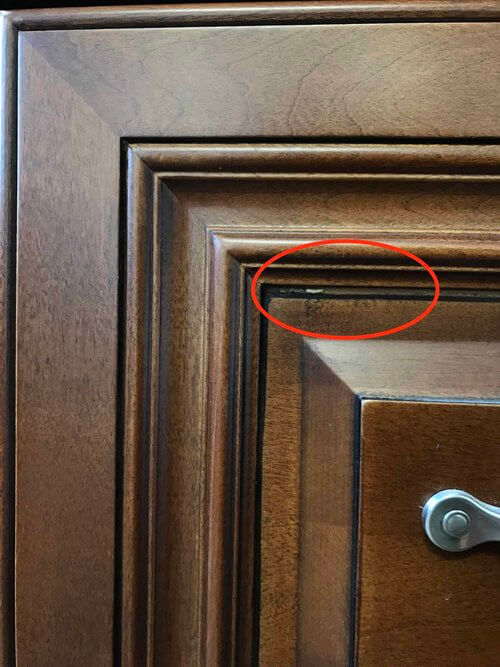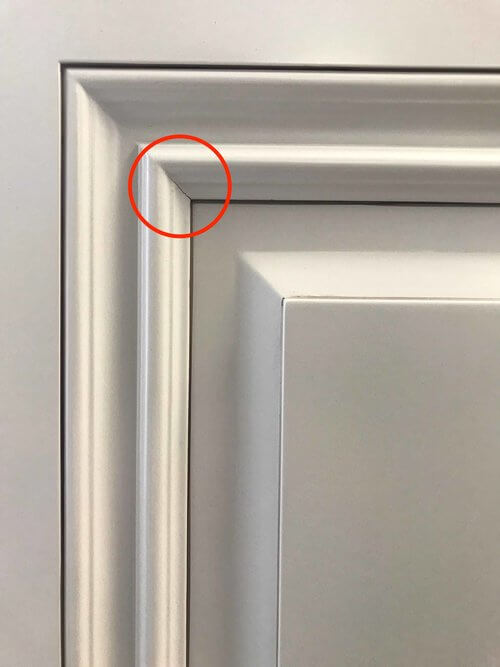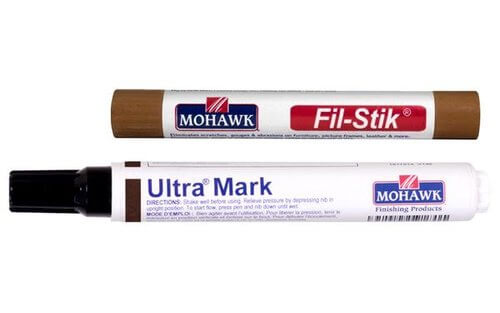Love the beauty and strength of the solid wood kitchen? Always remember, beauty comes with great responsibilities. Owning solid wood furniture requires careful maintenance, this ensure your solid wood furniture stays healthy and long lasting. Failure to maintain your solid wood furniture could potentially lead to damages. Read the following guide to gain a good understanding of solid wood furniture, as well as the proper way to maintain it.
Maintenance guide
Moisture is the key
When it comes to maintaining any solid wood product, the most important factor to control is moisture. Without getting overly scientific, the two main factor to keep in mind are Moisture Content (MC) and Relative Humidity (RH).
Moisture Content (MC): referring to the percentage of moisture existing within a piece of wood. All wood starts green, when a piece of lumber is cut down from the tree, depending on the species of the wood, typical MC within green wood ranges from 35% to over 150%. No matter how dry the wood appears to be, there will always be a certain amount of moisture within the wood. In solid wood furniture, the standard amount of moisture kept in the wood is around 8%, the reason behind this requirement will be explained below.
Relative Humidity (RH): referring to the percentage of water vapour existing within an area at a specific temperature. In other words, the moisture content in the air. The ideal RH indoors for healthy and comfort should be kept between 40-50%.
Maintaining Balance: Now that we know the RH level within an indoor home should be kept around 40-50%, by utilizing the chart below we can identify that 40% RH perfectly matches 8% MC within the wood, thus the reason why 8% is the required amount during the production of solid wood furniture. When both MC and RH are in balance, the solid wood pieces within the furniture are stable. However, if the RH within the room is affected by any means, the balance between RH and MC is lost, this could potentially lead to an issue called Wood Movement.
Wood Movement: Wood is sensitive to moisture change, the natural characteristics of wood causes it to always lose moisture or gain moisture, depending on the RH that the wood is exposed to. If the wood is in an area where the RH is higher than the equilibrium, then the wood will gain moisture as a way to re-establish balance, thus causing wood expansion. If the wood is in an area where the RH is lower than the equilibrium, then the wood will lose moisture to re-establish balance, causing wood shrinkage.
It is rare for issues due to excessive moisture to occur in North America, however issues due to lack of moisture content in the air can be very common. The Canadian winter is extremely cold, temperature can change dramatically throughout the year. During the winter, our furnace produces more heat to maintain our indoor temperature to a comfortable living condition. However, the large amount of heat produced by the furnace dries out the moisture in the house, causing the Relative Humidity level to drop below the required 40%, in return wood furniture loses its moisture content, causing wood shrinkage, forces the jointing part of the wood door to split.


Shrinkage of centre panel due to low RH level in Stained kitchen door

Wood joint splitting due to low RH level in Painted kitchen door
Damage Control: If the above issues already occurred in your kitchen there are steps to take to minimize the damage to the cabinets.

Mohawk touch up stain and putty stick
- Increase Relative Humidity within the kitchen area. When the humidity level is rebalanced within the room, the moisture content within the wood will increase as well. For most stained cabinet doors, the problem with centre panel shrinkage will most likely resolve by itself once the centre panel expands back to its original size. For painted cabinet doors, the splitting gap in the wood joint portion will close up to a degree, however since the painted joint of the door is already cracked open, it is impossible for it to return to its original condition.
- Re-apply staining to the exposed wood part of the centre panel for stained cabinet doors. This will hide the raw wood colour, making the issue appear unnoticeable. Stain markers are also good for touching up minor scratches and common wear and tear. You will be able to find stain markers in your local hardware store.
- Touch up putty is a good option to fill in the split gap for any painted cabinet doors. Touch up brands such as Mohawk, offers multiple colours options.
Maintenance, Cleaning and Caring for Marble/Cultured Marble/Artificial Marble
As you probably know, it is very easy to damage marble/cultured marble/artificial marble All it takes is placing something too hot (like a curling iron left on the counter too long, or a little cigarette burn) or even just setting something sharp (like a barrette) on the counter, and then when you pick it up you inadvertently scratch the marble/cultured marble/artificial marble countertop by accident.
Another way that you can quickly damage a marble/cultured marble/artificial marble countertop is by not cleaning it properly.
Here is the proper way to clean a Marble/Cultured Marble/Artificial Marble countertop… The following instructions are for marble/cultured marble/artificial marble countertop countertops and bathroom vanities.
If you’re not sure whether you have solid marble, cultured marble or artificial marble treating your countertop as if it is solid marble might be the safest option.
1. Take a clean spray bottle and fill it with an all-purpose water-based cleaner, or a pH-neutral cleaner that is designed for stone.
2. Spray the cleaner on the counter and use a soft damp cloth (think: microfiber or chamois, not any type of scrubber) to wipe down the entire marble /cultured marble/artificial marble countertop.
Most importantly, you should never use anything abrasive on a marble/cultured marble/artificial marble countertop — such as steel wool, coloured scrubbers, or anything else that you would normally use to scrub out a stain. These can all damage marble/cultured marble/artificial marble countertops in a matter of seconds.
And even though you can repair and refinish a marble/cultured marble/artificial marble countertop, it will never look the same as it did when it was first purchased.
Cleaning Products That Are Safe To Use On Marble
- StoneTech Revitalizer
- StoneTech Stone And Tile Cleaner
- Stone Pro Marble Products
You should never use anything with harsh chemicals in it on a cultured/artificial marble countertop.
Avoid using bleach or anything with bleach products in them, for example.
What About A Dull Finish & Stains?
You want to avoid spilling anything that has any kind of color on your cultured marble countertops. Be sure and wipe off anything that might stain the surface of your marble countertop right away.
Hard water can stain cultured marble countertops too. Many people don’t realize this. You should never leave water on your countertop in any form: water drops, water rings from the bottom of a glass, etc. Instead, you should wipe up water on your marble countertop using a soft cloth.
Technically, the dull finish that most people experience with marble countertops is called “etching.”
Marble is sensitive to acidic substances (juice, wine, coffee) so it can “etch” (dull the polish) rather easily, even when sealed. Sealing has nothing to do with etching. What happens is that the acidic liquid or substance corrodes or eats at the marble. The reaction will destroy the thin polished layer causing a dull, light spot.
By remembering to avoid powdered cleansers and other abrasives, along with being careful about not dropping anything heavy on your cultured marble countertop will a long way towards keeping your marble countertop clean and looking its best.

